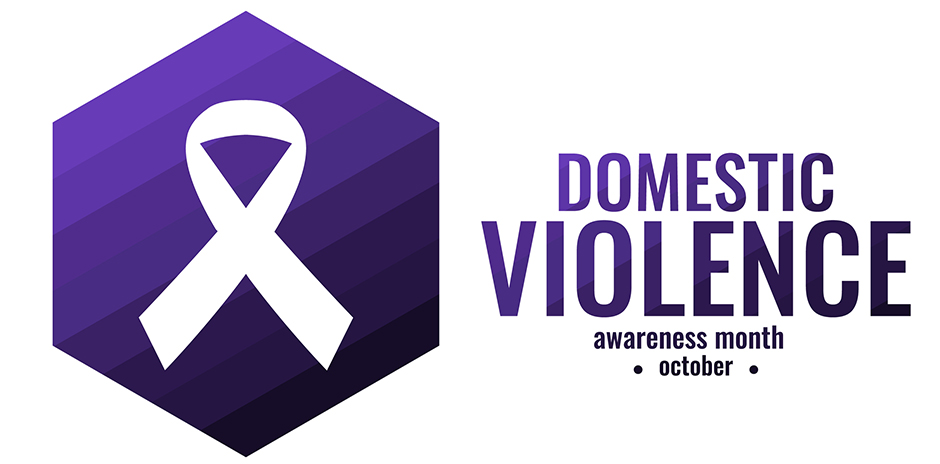

Domestic violence continues to threaten families and individuals across the country. According to the National Coalition Against Domestic Violence, more than 10 million people are physically abused by an intimate partner every year in the U.S., including men and women. Intimate partner violence accounts for 15% of all violent crime, including physical and sexual abuse, rape, stalking, and even homicide. Victims of domestic abuse often experience symptoms of depression and post-traumatic stress disorder.
Domestic abuse can also lead to financial and personal hardship. Victims of intimate partner violence lose a total of 8.0 million days of paid work each year, and the total cost of intimate partner violence exceeds $8.3 billion per year.
October is Domestic Violence Awareness Month. As a nurse or healthcare provider, you’re responsible for the care and wellbeing of your patients. We’re here to talk about the signs of domestic abuse, so you can identify and help patients who may be suffering at home, including children, adults, and seniors.
Types of Abuse:
The word “abuse” can refer to various forms of physical, sexual, mental, and emotional mistreatment. Research shows that around 67% of those harming a vulnerable adult are family members, typically the victim’s adult child or spouse. It’s also been estimated that the abuser is often financially dependent on the victim’s resources.
Abuse can take many forms. The different types include:
Signs of Abuse:
The signs of abuse vary based on the type. Keep an eye out for these red flags in the workplace:
Bruises, black eyes, welts, lacerations, rope marks, broken bones, open wounds, cuts, punctures, untreated injuries, broken glasses, reports of overdose or underdose of medications, sudden changes in behavior, or the caregiver’s refusal to let visitors be with the victim alone.
Bruises around the breasts or genitals, unexplained venereal disease or genital infections, unexplained vaginal or anal bleeding, torn, stained, or bloody underclothing, or verbal reports of rape and abuse.
Agitation, depression, nervousness around certain individuals, mood swings, withdrawing from social interaction, lack of response to verbal communication, strange or unexplained behavior, including sucking, biting, or racking.
Dehydration, malnutrition, untreated medical concerns, poor personal hygiene, verbal reports of hazardous or unsafe living conditions, lack of proper clothing or medical care, signs of unsanitary or unclean living quarters, such as the smell of urine or feces.
Sudden changes in financial practices, such as suddenly withdrawing large sums of money, adding new names to bank signature cards, unauthorized withdrawal of funds or wire transfers, abrupt changes in a will or other financial documents, unexplained disappearance of funds or valuable possessions, unpaid bills despite having enough resources, forging of signatures, sudden appearance of previously uninvolved relatives claiming rights to the victim’s possessions, or individuals providing services that are not necessary.
Tips for Talking to Potential Victims of Abuse
If you suspect one of your patients may be a victim of abuse, whether it’s physical, sexual, or financial, you can ask the patient questions to gather more information about their situation. You can start a conversation with the patient with these questions:
If the patient seems reluctant to talk about these issues, you can try reframing the conversation to help them feel more at ease with statements such as:
If the patient acknowledges that they’re being abused, take time to listen to their story. Help them feel heard and supported. Offer empathy and let them know that you care about their health and safety.
You can then refer them to local organizations that help victims of abuse. You can also contact national organizations for more information as well as a list of local resources, such as:
If the patient refuses to acknowledge they are being abused, talk to one of your supervisors for further instruction. Depending on the situation, you may need to call the authorities. Every situation is different, and acting against the patient’s wishes may not be the best approach. Try to encourage them to seek the help they need before contacting the local authorities.
Participate in Domestic Abuse Awareness Month by talking to your coworkers about the signs of abuse. Everyone should know what to look for when examining and interacting with patients. We can all do our part to help curb domestic violence and abuse.
When we discuss students, we always mention their qualities. Those qualities show what they are…
If you or someone you know is juggling mental health issues alongside substance abuse, understanding…
For the last couple of weeks, the Israel-Hamas conflict has taken over the news cycle.…
Our eyes are invaluable, serving as our windows to the world. The ability to see…
Undoubtedly, one of the most demanding and challenging professions is nursing. Nurses work long hours in…
Echocardiography, or echo for short, is a key diagnostic test used by cardiologists to assess…